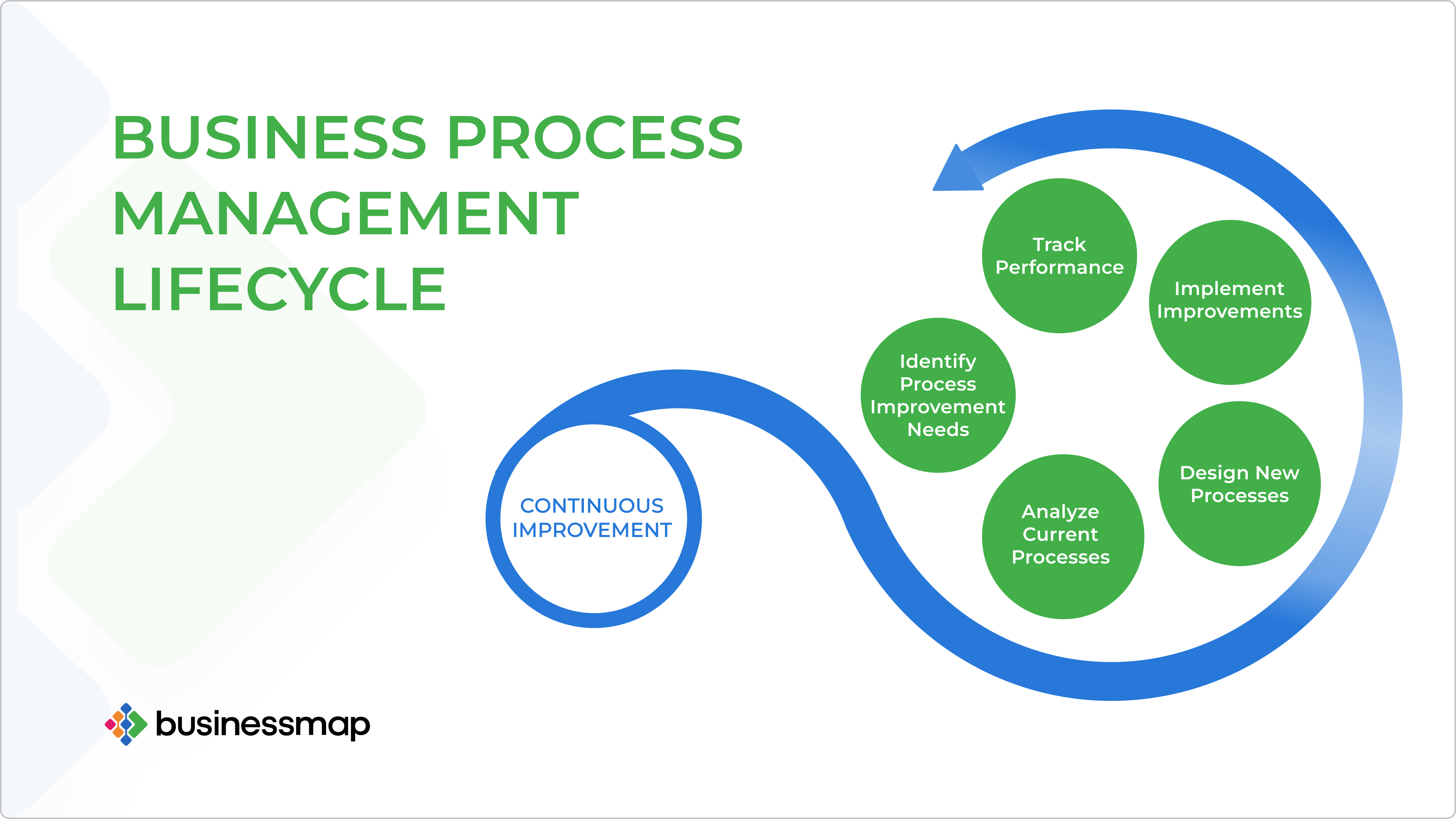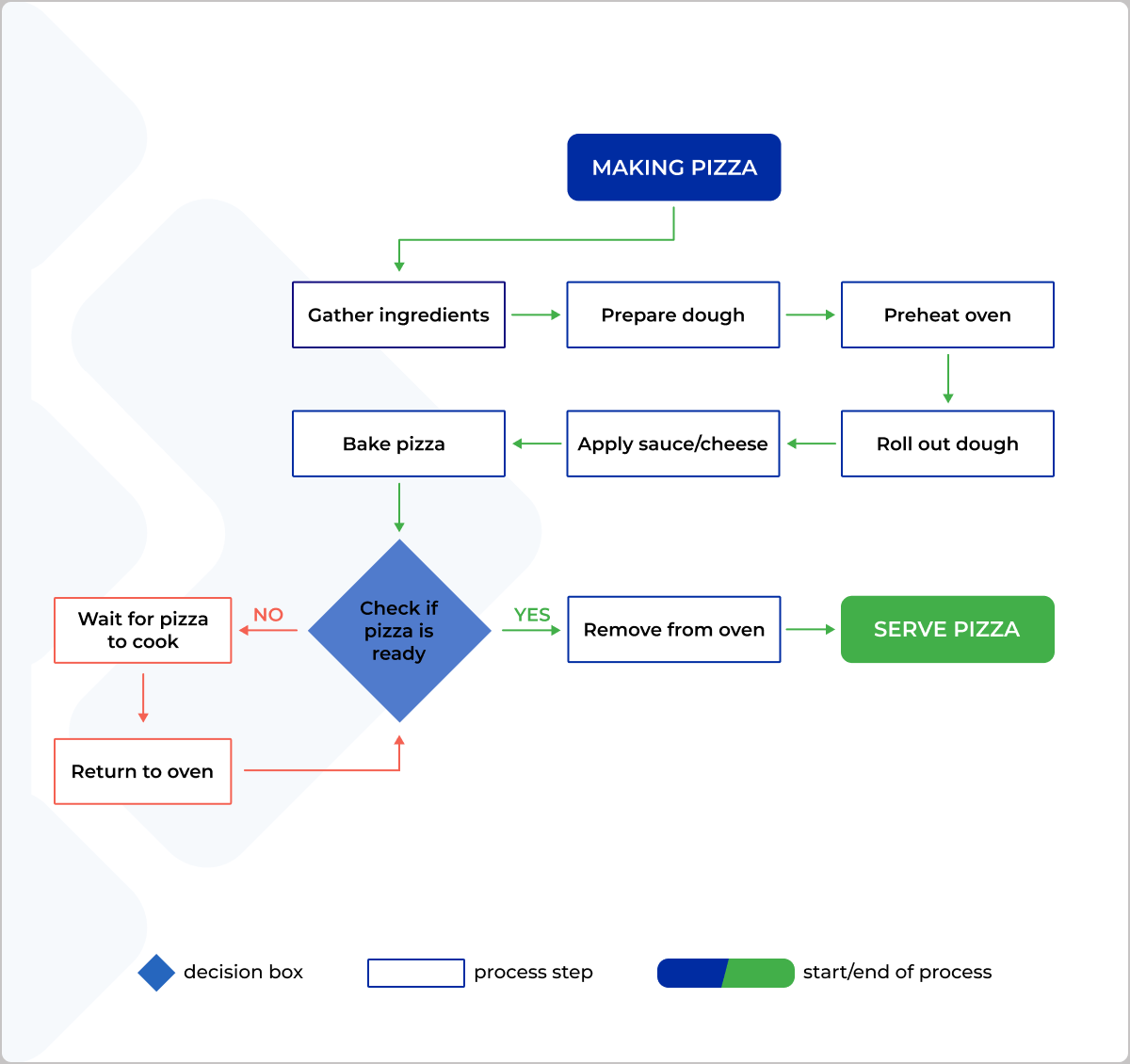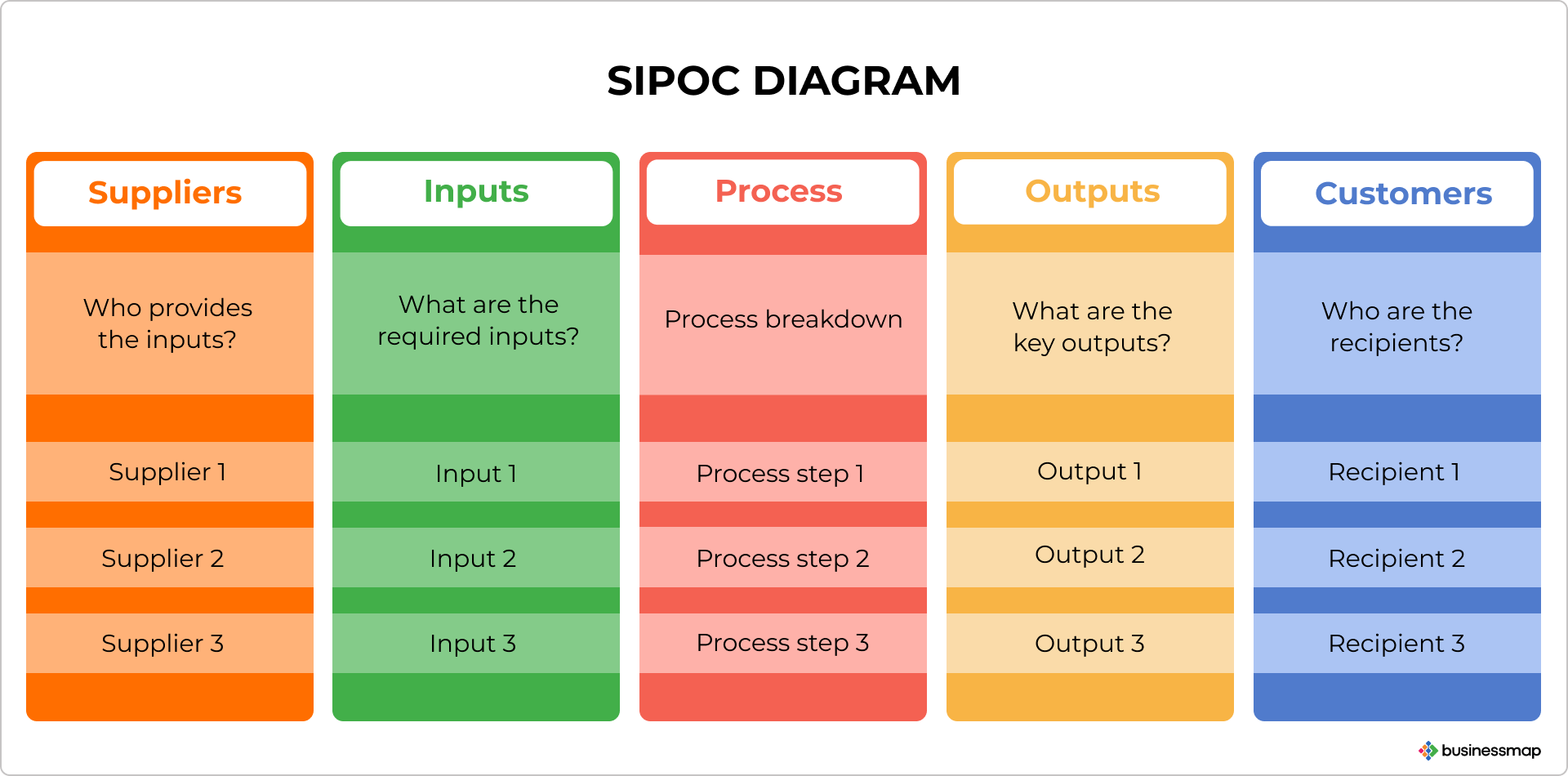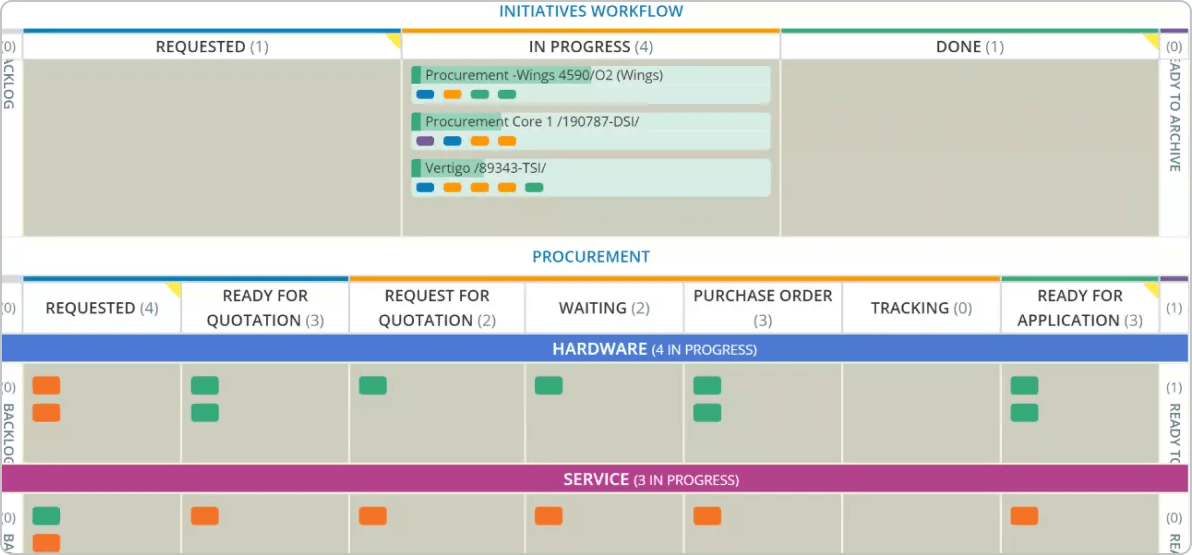What Is Business Process Management (BPM)?
Business Process Management (BPM) is a structured approach that helps organizations identify, model, analyze, and refine their processes to improve efficiency and align business activities with strategic goals. By streamlining workflows and automating repetitive tasks, BPM ensures that your teams and systems work harmoniously to achieve desired outcomes and process excellence.
For instance, BPM could mean optimizing the loan approval process in banking. Imagine a bank automating credit checks and customer verifications, reducing human errors and delays. This ensures faster loan approvals, improving customer satisfaction and aligning the service with business goals.

BPM goes beyond simple process automation through IT; it integrates multiple processes to ensure alignment with business strategies, policies, and regulations. At the same time, it enables processes to adapt to changing environments continuously.
For example, combining BPM with Six Sigma methodologies allows businesses to continuously refine and optimize processes, ensuring they stay attuned to specific customer or market demands, delivering greater efficiency and compliance along the way.
Let's uncover the important goals that the BPM discipline seeks.
Why Is BPM Important?
BPM helps organizations streamline workflows, reduce waste, cut down on errors, improve compliance, and increase their business agility. It also supports digital transformation initiatives and ultimately improves customer satisfaction by aligning processes with strategic goals.
For example, a well-executed BPM strategy in a retail company could involve automating order tracking and inventory management, reducing delays and errors. This would lead to faster delivery times, improved customer experience, and more efficient resource use, all while allowing the company to adapt to changes in demand quickly.

Key Benefits of Introducing Business Process Management Practices
BPM promises to guide businesses through the digital age, enhancing operational efficiency and fostering sustainable growth via:
- Streamlining workflows
- Reducing waste
- Identifying bottlenecks
- Minimizing errors
- Boosting compliance with regulations
- Supporting digital transformation
- Enhancing adaptability to change
- Driving customer satisfaction
- Ensuring scalable excellence
A 2024 study on the future of BPM found that businesses, especially those with 1,000+ employees, are still motivated by BPM's ability to improve efficiency, scalability, and regulatory compliance. The study predicts a significant shift in enhancing customer experience to become the main BPM driver in only three years.
Key Types of BPM Systems
BPM systems can be categorized into three types based on organizational goals. Each type addresses specific needs, helping automate and streamline workflows according to the process at hand.
- Integration-Centric BPM: This type focuses on automating processes that span multiple systems. It's ideal for connecting applications and data flows, such as automating a supply chain management system that pulls data from multiple sources like inventory, orders, and logistics.
- Human-Centric BPM: Designed for processes that require human intervention, such as approvals or reviews. A good example is managing a hiring process where different team members need to collaborate on candidate evaluations.
- Document-Centric BPM: Used when the workflow revolves around document management, such as processing legal contracts or insurance claims. It helps ensure documents are correctly routed, approved, and archived.
What Are No-Code/Low-Code BPM Platforms?
Low-code and no-code platforms are BPM solutions that use Rapid Application Development (RAD) to let non-technical users automate processes, such as building a budget approval process through visual interfaces without coding. These platforms' growing popularity drives deeper integration of AI and machine learning into everyday operations, making advanced technologies more accessible and boosting efficiency.
While focusing on visualizing processes to improve efficiency, work management tools like Businessmap enable automation and customization of workflows, making it possible to streamline various processes all without the need for extensive technical expertise.
The 5 Phases of the BPM Lifecycle
The BPM lifecycle consists of five key phases, as outlined by the latest guide on business process management BPM CBOK version 4 (ABPMP International):
1. Initiation: Start by identifying the need for process improvement, conducting feasibility studies, and securing stakeholder buy-in. This is also the time to begin mapping your business processes effectively. Use flowcharts, value stream maps, or a simple whiteboard to visualize each process step. This helps define waiting stages and areas for improvement.
2. Analysis: Review every step in the current process to spot inefficiencies, such as certain stages taking too long to complete, communication constraints, or the potential for automating some steps.
3. Design: Create a new or enhanced process, and define goals, activities, and roles based on the analysis you conducted. Seek feedback on ways to redesign further and improve the solution.
4. Implementation: Begin by rolling out the changes and training employees. Implement workflow adjustments through a pilot project to gradually introduce BPM improvements before scaling across the organization.
5. Monitoring and Control: Track performance to ensure objectives are met, followed by ongoing optimization, if necessary, to improve efficiency and adaptability.
A key feature of BPM is its iterative nature, which requires continuous attention to keep pace with evolving business needs and ensure organizational efficiency is always at its peak. Just as the human body needs regular care, nourishment, and exercise to stay healthy and perform optimally, business processes must be nurtured and refined to stay aligned with evolving goals and challenges.
 Mapping of a pizza-making process using a flowchart
Mapping of a pizza-making process using a flowchart
BPM Tools and Techniques
BPM tools like SIPOCs, process flows, and histograms help businesses better manage and optimize their processes.
- SIPOC Diagram: A SIPOC diagram is a high-level process diagram that outlines Suppliers, Inputs, Processes, Outputs, and Customers, helping you to clarify process scope. It is utilized as a business process tool defining the ins and outs of a process.
 A basic sipoc diagram template
A basic sipoc diagram template
- Process Flows: These visual representations of workflows enable teams to map out steps and identify inefficiencies, streamline work execution, and overall support daily operations. A well-defined process flow allows you to adapt and react quickly to changes and improve operational execution.
- RACI Matrix: A RACI matrix defines who is responsible, accountable, consultable, and informed, ensuring clear role assignments in a business process, especially useful in cross-functional environments.
- CTQ (Critical to Quality) Tree: A CTQ tree highlights vital factors and characteristics influencing quality, helping prioritize requirements and meet user expectations.
- BPM Solutions: Modern business process management and optimization solutions offer real-time and actionable insights and apply automated actions to facilitate operational excellence.
 Implementing a procurement business process in Businessmap
Implementing a procurement business process in Businessmap
When used effectively, these tools can drive clarity via transparency, efficiency in managing the end-to-end workflows, and alignment between process management and strategy execution.
BPM Examples and Use Case Scenarios
Let's show how BPM enhances efficiency, consistency, and responsiveness in key organizational processes, making them more efficient and aligned with business goals.
In Human Resources (HR), BPM can automate the employee onboarding process, ensuring that all necessary paperwork, training, and approvals are completed seamlessly. This improves efficiency and provides a consistent, positive experience for new hires.
In Procurement, BPM can streamline the purchase approval process by automating each step, from the initial request to final approval. For example, when a department submits a purchase request, BPM can automatically route it to the appropriate manager for review and approval. By automating the workflow, you can reduce delays, eliminate errors, and maintain a clear audit trail, ultimately improving the overall efficiency of procurement operations.
In Customer Service, BPM enhances customer service by managing ticketing systems, automatically prioritizing issues, routing them to the correct team, ensuring timely resolution, and improving response time and customer satisfaction.
In Sales, BPM can mean tracking lead management, automating follow-ups, ensuring the sales pipeline is appropriately nurtured, helping sales teams focus on closing deals, and reducing lead time.
BPM in Marketing can involve managing campaign approvals, from content creation to final approval, ensuring all necessary steps are followed, and helping teams collaborate effectively to meet deadlines.
To create valuable content across all regions, we implement specific BPM approaches at Businessmap. One of them is a global content workflow that aims to streamline collaboration across the company's business, partnerships, and product development teams. This system serves as a hub for gathering all feedback, ensuring every piece of content we create has a clear purpose. To avoid producing generic content, we follow a detailed automated template that prompts us to consider critical questions, such as the content's goal and involved stakeholders.
 Implementing marketing team business process steps in Businessmap
Implementing marketing team business process steps in Businessmap
Business Process Management Pitfalls to Avoid
Creating and maintaining a sustainable business process requires an awareness of the challenges. In Business Process Management: Practical Guidelines to Successful Implementations (2006), Jeston and Nelis highlight three essential pitfalls to avoid when integrating a BPM approach:
- Lack of Leadership Support: Without senior management commitment, BPM initiatives can struggle to gain organizational momentum and alignment.
- Unclear Objectives: Failing to define clear goals for BPM efforts can lead to misguided implementation and wasted resources.
- Overcomplicating Processes: Trying to solve every problem at once can overwhelm teams; it's crucial to prioritize and simplify processes for more effective implementation.
How to Implement a BPM Strategy? Best Practices to Get Started
To set the stage for a successful BPM strategy, here are key practices to guide your journey.
- Define Goals: Identify business objectives, current processes, and existing challenges.
- Gather Data: Collect documents, surveys, and tools already used to determine organizational needs.
- Assess Solutions and Organizational Readiness: Evaluate BPM tools and ensure the organization is ready to adopt a new strategy.
- Plan Deployment: Develop a pilot project for implementation.
- Solution Assessment: Review shortlisted solutions thoroughly.
- Selection Process: Choose the right BPM platform.
- Pilot: Test the chosen solution before a full rollout.
The Future of Process Automation in BPM
As we look ahead, the role of BPM is set to transform even further, with customer experience predicted to become the main driver for process optimization over the next three years.
With 90% of organizations expected to prioritize BPM, the emergence of low-code and no-code platforms will push automation to new heights, integrating AI and machine learning into everyday operations. (BPM Institute)
These advancements, along with AI and IoT, will boost efficiency and competitiveness, making BPM more essential than ever in delivering personalized, customer-centered solutions. (Business Process Management Journal)
Exciting times lie ahead for businesses embracing this change!
Businessmap is the most flexible software
to align work with company goals





